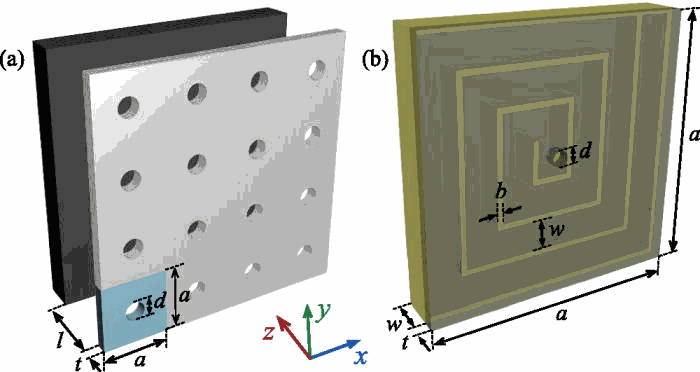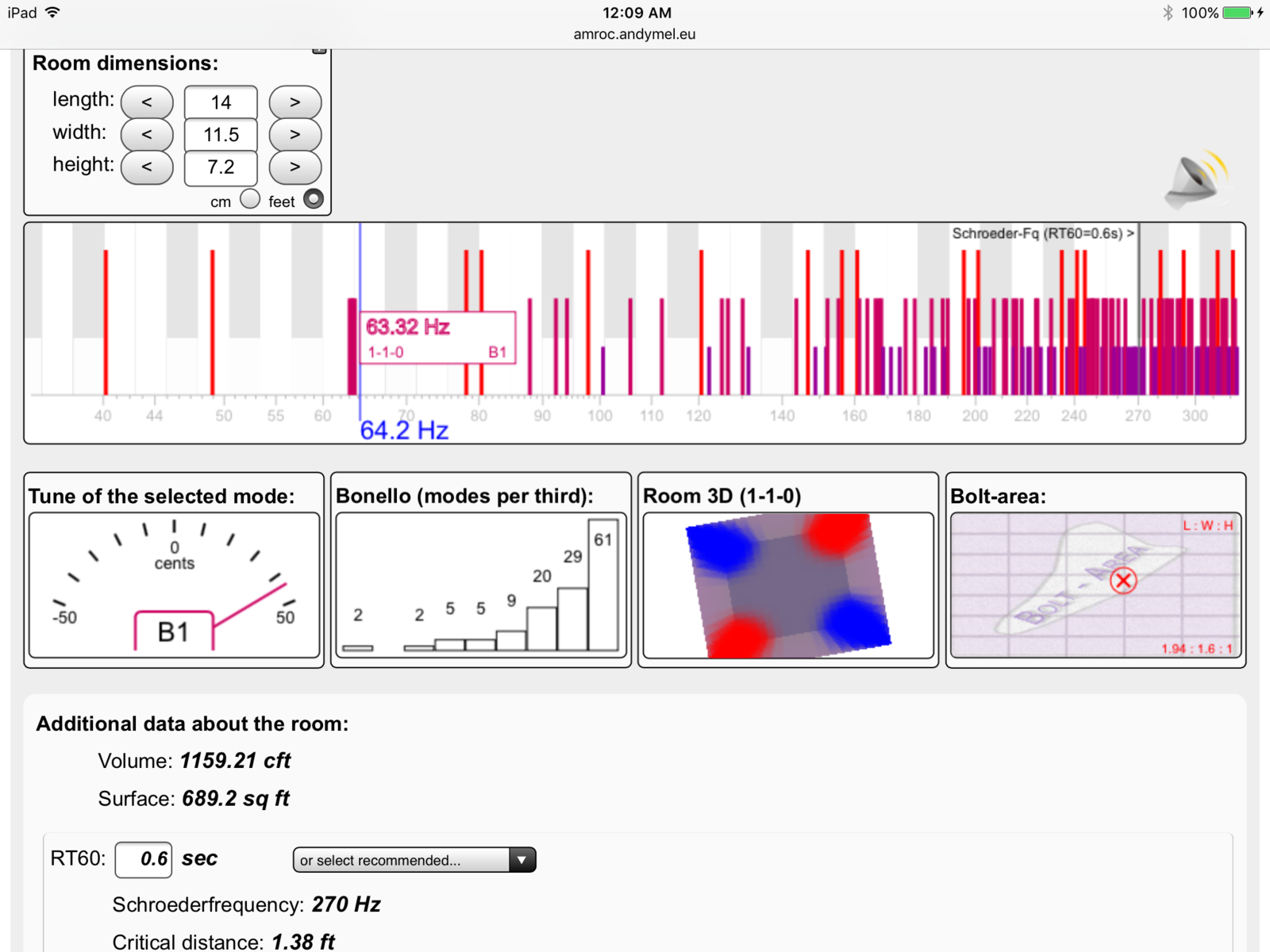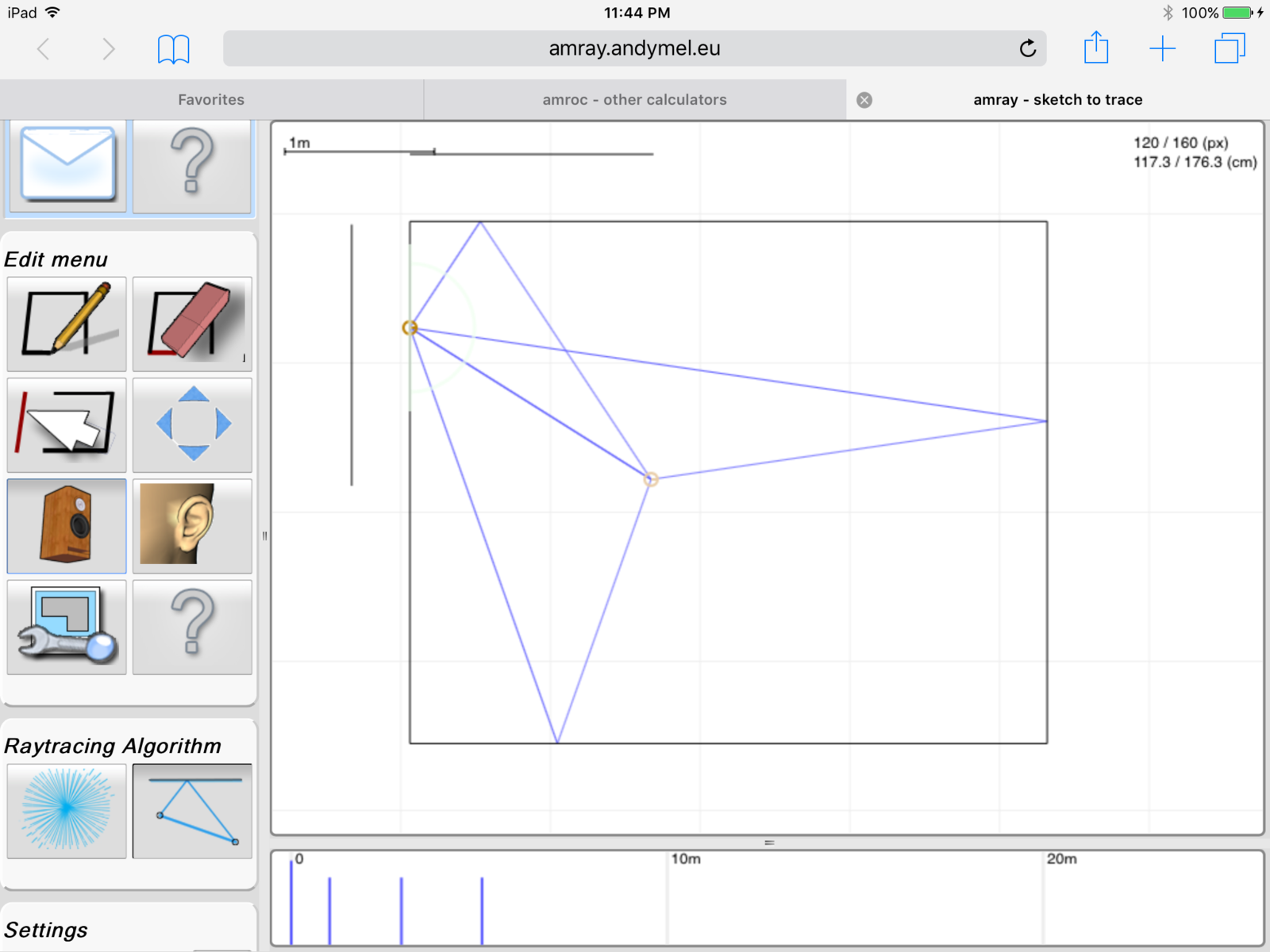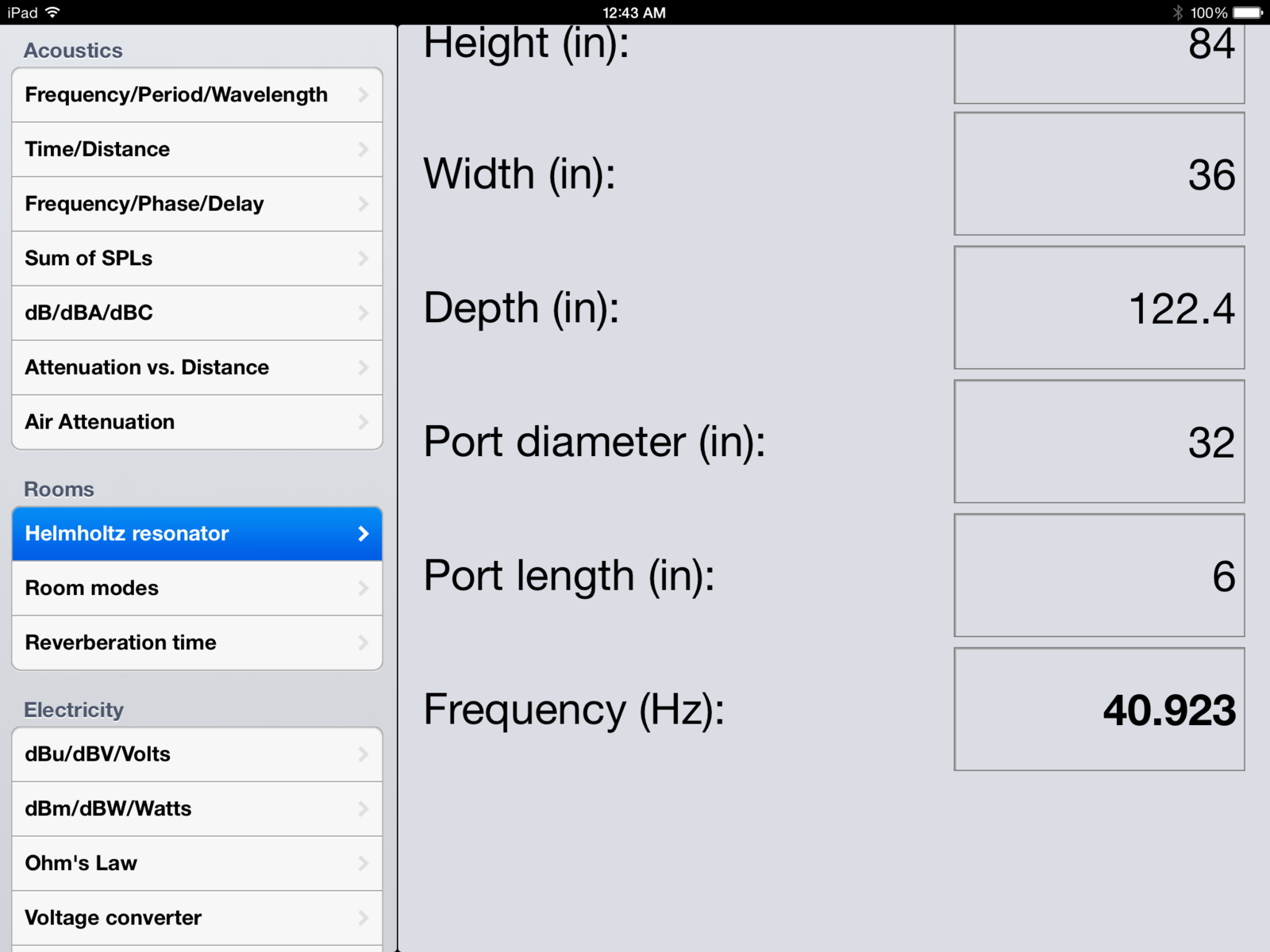http://phys.org/news/2016-02-absorbing-acoustics-soundless-spirals.html
Is there anything to this? Could this be a great idea for handling low frequencies in studios?
Is there already a thread on this?
-Johntodd
Topic Tags
Comments
Kurt Foster, post: 436104, member: 7836 wrote: it looks like the
Kurt Foster, post: 436104, member: 7836 wrote: it looks like they are forming a labyrinth/channel that is 14 feet (or more) in length configured sideways coupled to a Helmuoltz resonator. it looks like it might work.
Oooookay... You mentioned the Hemholtz and I think I'm getting it now... the theory being that the sound enters the small port on the front, and then is forced into the channel or "maze" inside the trap, which is at least as long as the wavelength of whatever the trap is tuned for frequency-wise... right?
So is this like a reverse "Bose speaker system"? Instead of the
So is this like a reverse "Bose speaker system"? Instead of the wave channels amplifying the bass output it is simply trapping what comes in?
Also, how does one get a room full of bass to go into that tiny little hole? Am I missing something about bass propagation?
DonnyThompson, post: 436105, member: 46114 wrote: Oooookay... Y
DonnyThompson, post: 436105, member: 46114 wrote: Oooookay... You mentioned the Hemholtz and I think I'm getting it now... the theory being that the sound enters the small port on the front, and then is forced into the channel or "maze" inside the trap, which is at least as long as the wavelength of whatever the trap is tuned for frequency-wise... right?
yep ..... i'm not saying it works, 'cause i am not really qualified to say that. just sayin' it looks like it might be legit ....
JohnTodd, post: 436107, member: 39208 wrote: So is this like a reverse "Bose speaker system"? Instead of the wave channels amplifying the bass output it is simply trapping what comes in?
Also, how does one get a room full of bass to go into that tiny little hole? Am I missing something about bass propagation?
yes, exactly the same thing as a Bose system. the "tiny little hole" is no different than a port on a speaker. how does all that bass get out of a nearfied monitor? it's the same thing (i think). as with all Helmholtz resonators, the size of the hole affects the freqs absorbed ....
JohnTodd, post: 436101, member: 39208 wrote: Could this be a gr
JohnTodd, post: 436101, member: 39208 wrote: Could this be a great idea for handling low frequencies in studios?
-Johntodd
Probably not. In the current configuration the model is working on frequency at 128Hz with optimum performance. Hardly low frequency for anyone to be concerned with in small rooms.
And I would mention that as the frequency acquisition target goes down the model will get more bigger :) So once it is capable of handling the 20 Hz lf we worry over, it will be a room in and of itself, hopefully with directions on how to get out of the maze.
But, in defense, if 128Hz is a problem in your room we should look into trying to get prints and do these things!
does anyone here have issues with 20 Hz? who even has monitors t
does anyone here have issues with 20 Hz? who even has monitors that go to 30Hz? maybe Allen Sides. lol. and if you're in that small of a room, should you even be trying to monitor freqs that low? i don't think so.
what other commercial solutions reach down to even 50Hz? most are targeting between 80 to 200 Hz. there is a report in SOS of Ethans traps targeting down to 90Hz, having effect on freqs as low as 50Hz.
imo, getting good response below even 60Hz requires correct room dimensions. you can't pack 10 lbs of dirt into a 5lb bag.
JohnTodd, post: 436132, member: 39208 wrote: LOL! Somebody do the calculations and tell us how big it would be.
http://www.csgnetwork.com/freqwavelengthcalc.html
again, i guessing here but i think you need to research how long the wavelength is for the target frequency. the length of the labyrinth should correspond if my assumptions are correct. 2'X2' looks like it would be about 14', which would make good to 120 Hz.
a 4o Hz. wavelength is approximately 27 feet long and would require (again if i'm correct) a 4'X4' box. keep in mind, the size of perforations on the one panel and the size of the port on the other figure in as well. i have no idea how to figure that out. we need someone who gets the math to figure that one out. i also have no idea how wide it needs to be. it looks to be about 6" for the example. does this double to 1' for a larger 4'X4' trap?
Kurt Foster, post: 436138, member: 7836 wrote: does anyone here
Kurt Foster, post: 436138, member: 7836 wrote: does anyone here have issues with 20 Hz? who even has monitors that go to 30Hz? maybe Allen Sides. lol. and if you're in that small of a room, should you even be trying to monitor freqs that low? i don't think so.
what other commercial solutions reach down to even 50Hz? most are targeting between 80 to 200 Hz. there is a report in SOS of Ethans traps targeting down to 90Hz, having effect on freqs as low as 50Hz.
imo, getting good response below even 60Hz requires correct room dimensions. you can't pack 10 lbs of dirt into a 5lb bag.
http://www.csgnetwork.com/freqwavelengthcalc.html
again, i guessing here but i think you need to research how long the wavelength is for the target frequency. the length of the labyrinth should correspond if my assumptions are correct. 2'X2' looks like it would be about 14', which would make good to 120 Hz.
a 4o Hz. wavelength is approximately 27 feet long and would require (again if i'm correct) a 4'X4' box. keep in mind, the size of perforations on the one panel and the size of the port on the other figure in as well. i have no idea how to figure that out. we need someone who gets the math to figure that one out. i also have no idea how wide it needs to be. it looks to be about 6" for the example. does this double to 1' for a larger 4'X4' trap?
From what I understand you loose 6 (or maybe 12?) db of efficientcy per octave. So a center frequency of 60 hz would dip to 30, just not do a whole lot unless it was a large trap to be beet efficient at 60. I could be wrong on this.
As far as I understand it in a basics trap it needs to be the depth of 1/4 of the wavelength to be effective. I'm not sure if this applies to tuned traps, which is a combination of panel thickness, perforation, and cavity. So I think a 40hz trap would need to be 7 feet deep to center on that frequency. This isn't accounting for times traps. The one I'm building for a home theater is 7' wide and 3' deep. It's center frequency on my helmholtz calculator/room mode app centered it at 40hz. So that would be the primary frequency of the chamber, and how much of that 40hz gets eaten depends on how much insulation is there, where it is placed, and how dense it is. I'm still unclear how to calculate how much it will actually absorb, and how to predict that effect at the listening position. So I just copied the design from rods book. Ametuers borrow and professionals steal. Isn't that the saying? Lol. I've been trying to figure out the calculation for a traps efficacy for a while but I can't find a step by step answer. I know cubic footage, and has flow resistivity seem to come up a lot in the discussions. I think it's either a mass air mass calculation and/or a multi layer absorber calculation. If I can find the links to the calcs I'll post it. We should actually start a sticky with all the calcs in one spot. One of them is wicked cool and shows modal spacing with musical notes and hz, a picture of each mode and harmonics hot spots, and another relavent thing.
When I figure out how to predict the db level of absorbsion at distances I'll be on my way to a real acoustician. Still a hack for now.
If they made this thing go down into the 75-90 hz range it would target the majority of home studio owners main room mode problems.
If the maze trap had the maze going front to back instead of side to side I wonder if it would go lower.
This is the calc I was talking about.
Looks like the address is in top. This is actually my bedroom dimensions I had as an experiment. I don't have it setup with audio gear anymore.
A ray tracing calc!!
And the calc for a 40hz resonant room. Again this one doesn't tell you 'how much' absorbsion just the resonant frequency.









It's intriguing...and if it did work it would certainly save a l
It's intriguing...and if it did work it would certainly save a lot of space, as mass and density have always been the popular way to deal with low end issues - the trade off being that often, the physical size of those devices to hold that required effective mass often makes using them impractical in smaller areas.
I have no idea of whether this would work or not. Brien or Kyle would be the ones to know. ( @Brien Holcombe , kmetal )